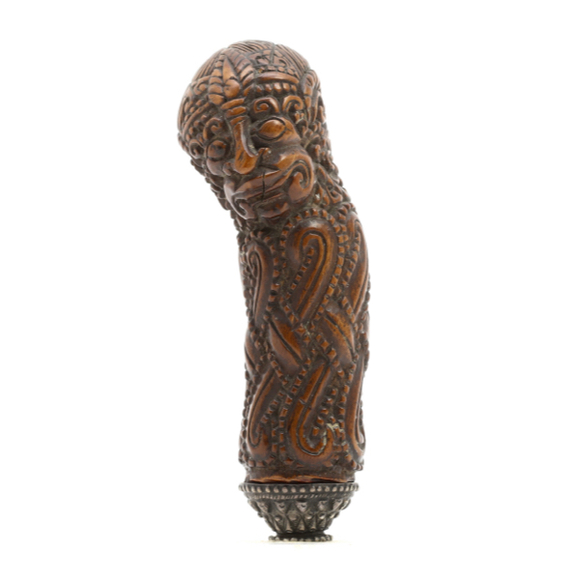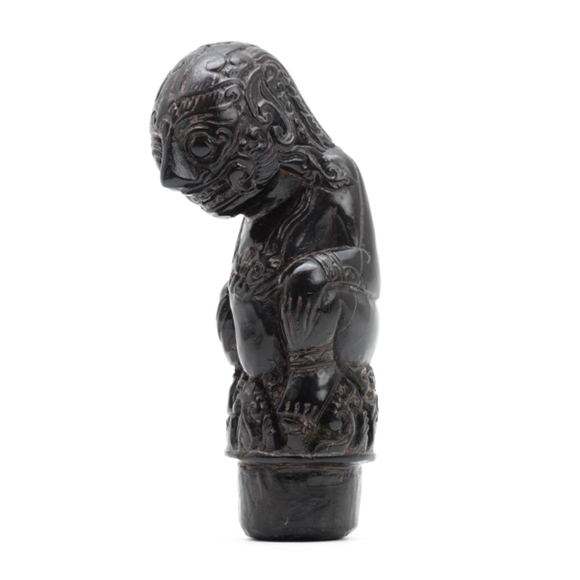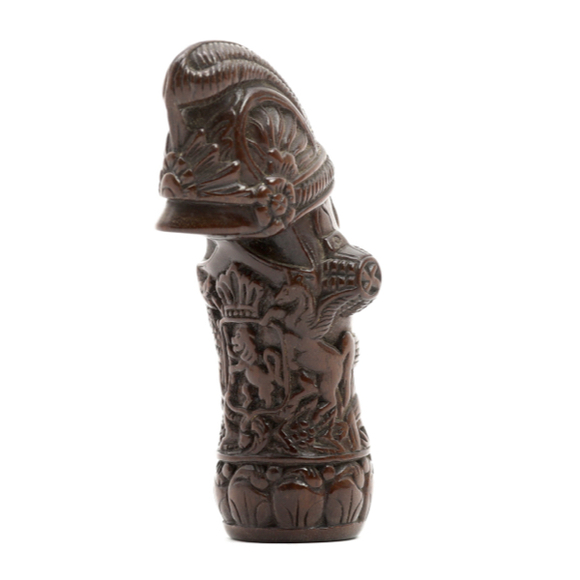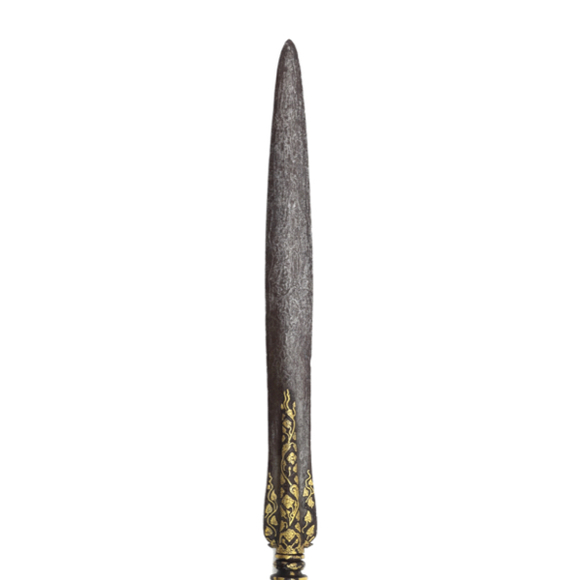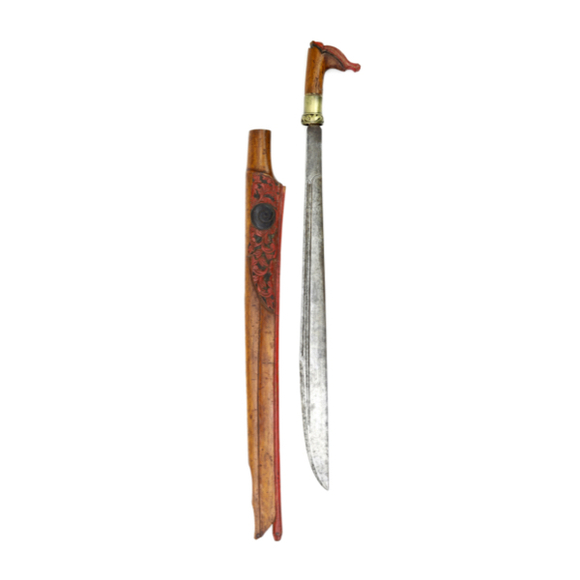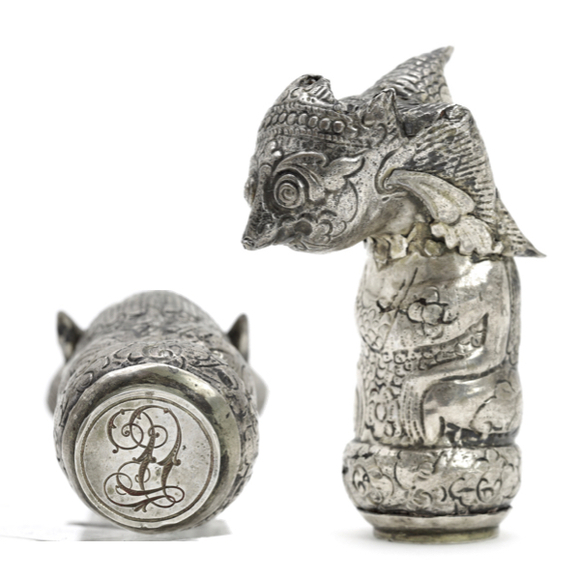19th century, probably originating from Cirebon.

63.8 cm
51.4 cm
Base 8 mm
Middle 5.5 mm
5 cm from tip 3.5 mm
Base 25 mm
Middle 29 mm
5 cm from tip 32.5 mm
651 grams
Iron, steel, báitóng, brass, water buffalo horn.
Kalimantan, Indonesia.
Circa 1850-1900
Introduction
The parang nabur is a curved saber from the southern part of the island of Kalimantan, also known as Borneo. It was primarily used by Malays living in that part of the island, during the Sultanate of Banjar that lasted until 1905.
Some also ended up in the hands of Dayak chieftains, probably through trade. While collectors in the English speaking world mostly know the weapon as parang nabur in following of Stone's Glossary, it is locally known as beladah or belabang.1
Many parang nabur combine a curved saber blade with both local and Islamic design features, often with a sharp backedge, with a handle that is strongly inspired by Dutch and English naval cutlasses.
Notes to introduction
1. George Cameron Stone; Donald J. LaRocca; A Glossary of The Construction, Decoration and Use of Arms and Armor: In All Countries and In All Times. Courier Dover Publications, 1999. Page 482. Also see Albert G. van Zonneveld, Traditional Weapons of the Indonesian Archipelago. Zwartenkot Art Books, Leiden. 2001. Page 99.
This example
The blade has a moderate curve and gradually widens in profile until the spine abruptly curves down to meet the edge as the tip. There is a single fuller on either side that also gradually widens proportionately along with the blade's profile. It narrows only on the last quarter of the blade to give room for a back bevel meant to lighten the very tip of the blade in order to improve handling. The blade has a strong ricasso, with a groove demarcating the start of the edged section.
The hilt is made of a piece of black buffalo horn, cut to a facetted shape. The ferrule, stirrup style D-guard and a strip along the back of the handle are all made of the once-prized báitóng, possibly obtained from the Chinese community on the Island.
On either side, the hilt has two brass ornaments nails to it, and there is the characteristic brass wing shaped nut that these often have, peened at the pommel.
Condition
In very good, original condition. 100% complete. No damage, no repairs. Unfortunately, no scabbard.







A Madurese keris hilt, carved from dark hardwood in the form of a Dutch cuirassier.
Of typical South Borneo workmanship, but formed like a mandau from Kutai.

